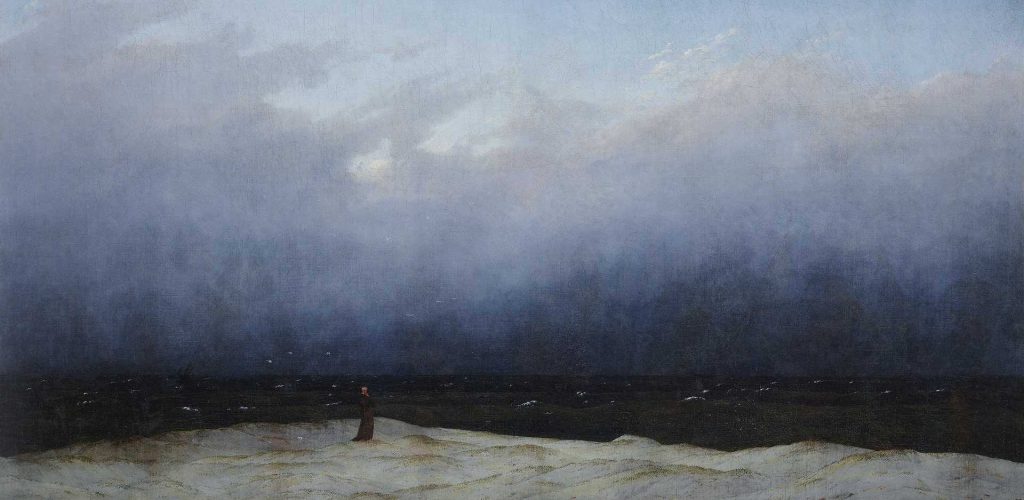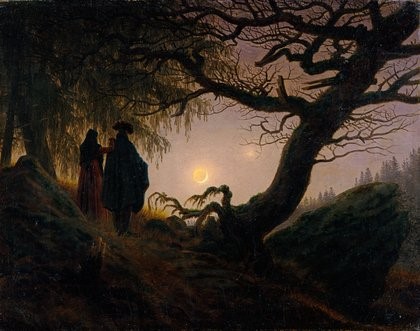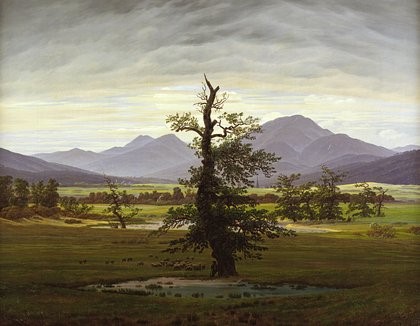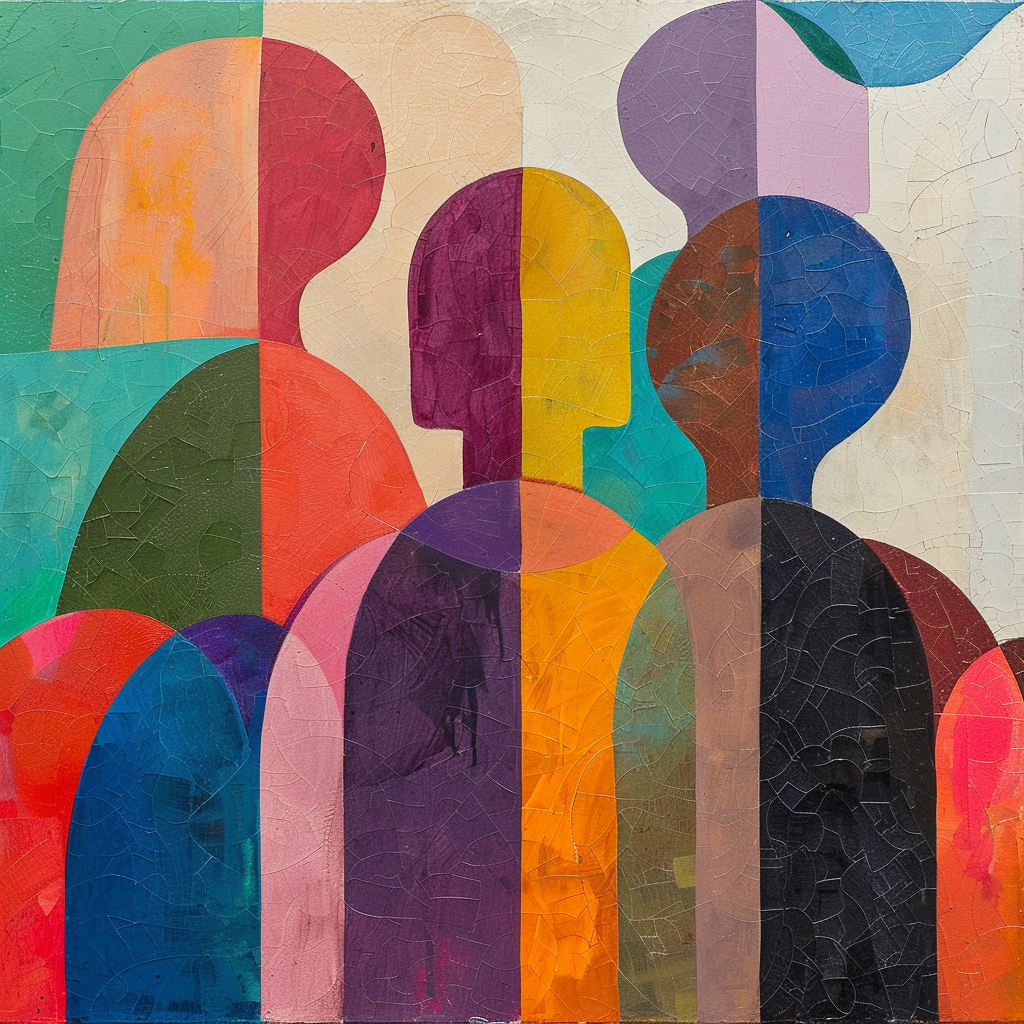2024 marks the 250th anniversary of the birth of Germany’s most important romantic painter. Museums across Germany are celebrating Caspar David Friedrich with major exhibitions and a new biography has been published to mark the anniversary.
The atmosphere in the magnificent throne room of Friedrich Willhem III’s Berlin palace was very tense. The court had come together to admire the new portrait of the monarch that he had commissioned from the famous painter Caspar David Friedrich. The king was obviously furious. What had happened? In 1816, at the height of his career, Caspar David Friedrich was commissioned to paint a portrait of the Prussian King Friedrich. Friedrich was unenthusiastic but urgently needed the money. There was a tense silence when the painting was unveiled. King Friedrich Wilhelm III, a man of Prussian austerity and imperious charisma, scrutinised the portrait with a disapproving look. Obviously dissatisfied, the king felt that the painting did not capture his royal appearance, that it was too gloomy, that it lacked splendour and majesty. Frederick, shy by nature, felt anger welling up inside him. He had spent years building his reputation as a master of landscape painting. Now he was to bow to the wishes of a monarch whose understanding of art was limited to pomp and splendour. “Your Majesty,” Friedrich exclaimed, “I am a painter, not a portraitist! The king, outraged and taken aback by the cheeky reply, ended the meeting abruptly. The portrait was never completed.
This anecdote is described in the new biography by Florian Illies (Zauber der Stille, Caspar David Friedrichs Reise durch die Zeiten). It shows the character of the artist quite impressively. Genius, visionary, melancholic and loner, but also non-conformist and equipped with the will, courage and determination to defend his artistic freedom.
In 2024, Germany will celebrate the 250th birthday of one of its most important artists. The anniversary year will kick off with the opening of a major exhibition at the Hamburger Kunsthalle (December 2023), which is already attracting record numbers of visitors. Two further extensive exhibitions in Berlin and Dresden invite art lovers to explore his work in even greater depth. From May 2024, the Alte Nationalgalerie Berlin will take visitors on a journey into the world of romantic landscape painting. In September 2024, an exhibition in Dresden will focus on Friedrich’s late work and his close connection to the city.
Dresden was Friedrich’s adopted home from 1798 until his death in 1840. Born in 1774 in Greifswald, on the rugged Baltic coast, Friedrich was characterised by nature and the sea throughout his life. His landscape paintings, masterful in their composition and profound in their symbolism, transport us into a world of loneliness, longing and the incessant search for the transcendent.

Caspar David Friedrich, Monk by the Sea, 1808-1810, Oil on Canvas, 110 x 171.5 cm, Nationalgalerie, Staatliche Museen zu Berlin / Photographer: Andres Kilger
However, Friedrich’s paintings are more than just depictions of nature. They are an expression of his inner feelings, the contradictions of his time and his search for the infinite. His masterfully composed landscapes, often dominated by imposing mountains, profound forests or the infinite sea, reflect the artist’s longing for harmony and redemption. Reality and fantasy, nature and mysticism, this world and the hereafter merge in his paintings.

Caspar David Friedrich, Man and Woman Contemplating the Moon, around 1824, Oil on Canvas, 34 x 44 cm, National Gallery, Staatliche Museen zu Berlin / Photographer: Jörg P. Anders
Caspar David Friedrich’s landscape painting captures the world shortly before the dawn of industrialisation, an era characterised by the massive influence of man on nature. In his works we see a still intact world that is about to disappear. Friedrich’s works are thus testimonies to a bygone era, which today give us an insight into a world that is irretrievably lost. The artist himself was aware of the threat posed to nature by man. In his letters and diaries, he expressed his concern about the increasing destruction. Friedrich’s landscape painting can therefore also be understood as a warning. It shows us what we could lose if we do not treat nature with care.

Caspar David Friedrich, The Lonely Tree, 1822, Oil on Canvas, 55 x 71 cm, National Gallery, Staatliche Museen zu Berlin / Photographer: Jörg P. Anders
Friedrich remained a lonely traveller throughout his life. His love of nature could not fill the emptiness in his heart. In his final years, he suffered from depression and illness, which impaired his work. Caspar David Friedrich died in Dresden on 7 May 1840.
Caspar David Friedrich was completely forgotten after his death, until an important exhibition 1906 at the National Gallery in Berlin, 66 years after his death. 93 paintings and drawings by the painter were on display in Berlin at the time, marking a renaissance for the artist. In this context, however, it must also be mentioned that only a few years later, Caspar David Friedrich was ideologically abused by the Nazies. The NS used Friedrich’s works to evoke a love of the German homeland and a longing for a past, “purer” time. They appropriated Friedrich’s art for their racist and nationalist propaganda and interpreted Friedrich’s paintings in line with their ideology, stylising him as a “völkisch” artist who embodied German culture and the “German spirit”.
It was only after the Second World War that the National Socialist interpretation of Friedrich’s work was gradually revised. Art historians began to see his paintings in a new light and to appreciate the complexity of his art. Today, Caspar David Friedrich is recognised as one of the most important artists of the Romantic period.
In addition to the major anniversary exhibitions, a recently published biography offers an excellent opportunity to rediscover the artist and his time. The renowned non-fiction author and art historian Florian Illies (Generation Golf, 1913, Liebe zu Zeiten des Hasses) has written “Caspar David Friedrich: Zauber der Stille” to mark the anniversary.
In it, Illies ignites a veritable firework display of history that magically links past and present. With his masterful feel for past eras, as he has already demonstrated in his works “1913” and “Love in Times of Hate”, he delves deep into the world of the painter Caspar David Friedrich. Illies is a master at combining the celebration of silence with insights into the life of the painter and the creation of his works. With stylistically confident precision, he paints a picture of a landscape painter who created nature studies of the most daring modernity and who still presents art historians with new challenges today.
Caspar David Friedrich’s anniversary is a major art event that should not be missed. It is an opportunity to rediscover one of the most important German artists and to be inspired by his works. Florian Illies’ book is an excellent complement to this. Unlike historical art or non-fiction books, it is written in a very fluid and entertaining way and offers many interesting insights into the artist’s thoughts.









